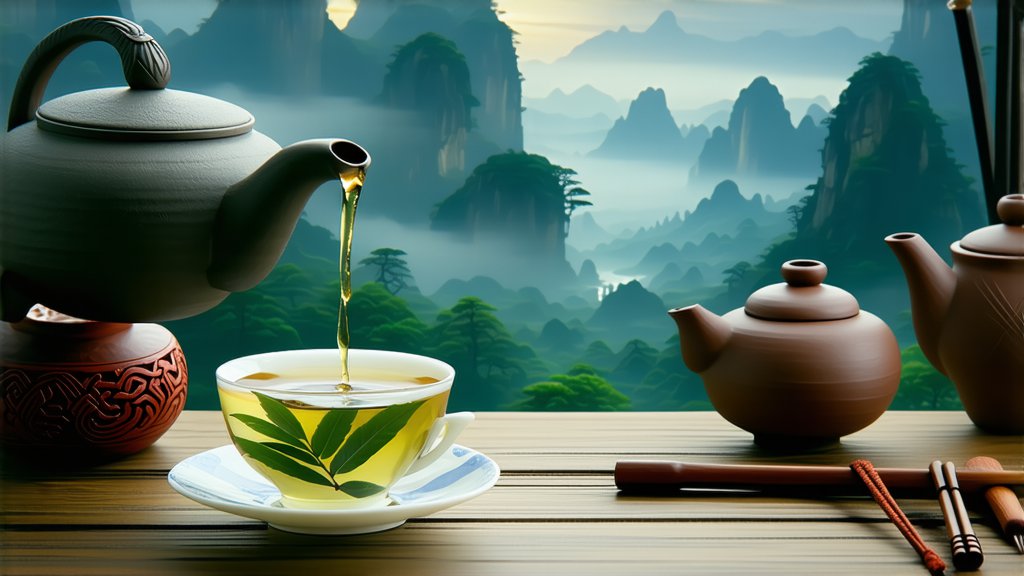
China, the birthplace of tea, boasts an array of exquisite tea varieties that have captivated palates and hearts worldwide. Among these treasures lies Longjing tea, often referred to as "Dragon Well" tea, a name that evokes images of mystical dragons and pristine springs nestled within the heart of the country. This article embarks on a journey to explore the rich history, diverse types, intricate production process, and the art of appreciating Longjing tea, shedding light on why it stands as a paragon of Chinese green tea.
A Legacy Brewed in Legend
Longjing tea traces its origins back over a thousand years to the Tang Dynasty (618-907 AD), with its cultivation becoming prominent during the Qing Dynasty (1644-1912). Its name is derived from the famous West Lake in Hangzhou, Zhejiang Province, where it is predominantly grown. Legend has it that a heavenly dragon descended upon this region, blessing the land with sweet spring water that nurtured the tea bushes, henceforth bestowing the tea with its distinctive name and exceptional quality.
Varieties of Longjing: A Symphony of Flavors
Longjing tea comes in several grades, each offering a unique taste profile and aromatic experience:
-
Xi Hu Longjing (West Lake Dragon Well): The crème de la crème, grown in the designated areas around West Lake. It features a flat, sword-like appearance, bright green color, and a mellow, chestnut-like flavor with a hint of orchid fragrance.
-
Qian Tang Longjing: Cultivated along the Qiantang River valley, this variety shares similar characteristics to Xi Hu but may have a slightly bolder taste due to the different terroir.
-
Yue Fei Longjing: Grown further afield in Yue Fei, this tea exhibits a more robust flavor profile while maintaining the classic Longjing shape and aroma.
Each variety embodies the essence of its specific growing environment, reflecting the diversity within the broader category of Longjing tea.
The Art of Crafting Longjing: From Leaf to Cup
The magic of Longjing tea lies not only in its heritage but also in the meticulous craftsmanship involved in its production. Here's a glimpse into the traditional process:
-
Handpicking: Only the youngest shoots and leaves are selected, ensuring optimal tenderness and flavor concentration. This usually occurs in early spring when the first flush of growth appears.
-
Fixation: Unlike other green teas that are steamed, Longjing undergoes high-temperature pan-firing, which halts oxidation and preserves its vibrant green hue. Masters skillfully toss and turn the leaves in woks to achieve the desired level of heat penetration.
-
Shaping: After fixation, the leaves are flattened and shaped into their characteristic flat, needle-like form through pressing and rolling techniques.
-
Drying: Finally, the shaped leaves are gently dried to remove any remaining moisture, enhancing their shelf life and concentrating their flavors.
This artisanal approach results in a tea that is visually stunning and a testament to human ingenuity and dedication to preserving tradition.
Savoring Longjing: An Experience Beyond Taste
To truly appreciate Longjing tea, one must engage in the ritualistic practice of Gongfu Cha, or "the way of fine tea." Here’s how to embark on this sensory journey:
-
Preparation: Use a Yixing clay teapot or a clear glass vessel to observe the unfurling leaves. Rinse the pot with hot water to warm it up.
-
Infusion: Measure approximately 3 grams of loose leaf tea per 150ml of water. Use water heated to around 80°C (176°F) to avoid burning the delicate leaves.
-
Steeping Time: For the first brew, steep for about 1 minute. Subsequent infusions can be progressively longer, adjusting to personal preference.
-
Observation: Watch as the leaves dance and release their essence, transforming the water into a pale jade liquid.
-
Aroma and Taste: Inhale deeply to capture the subtle floral notes before taking a sip. Let the tea roll over your tongue, savoring its umami depth and slight sweetness.
-
Appreciation: Notice the tea's texture, body, and the lingering aftertaste that signifies a well-crafted Longjing.
Longjing tea is more than just a beverage; it is an invitation to slow down, immerse oneself in the present moment, and connect with nature's bounty.
In conclusion, Longjing tea encapsulates the harmony between man and nature, tradition and innovation. Its legacy continues to thrive, enchanting new generations of tea enthusiasts worldwide. As you embark on your own exploration of this verdant elixir, remember that each cup tells a story—one of history, culture, and the timeless pursuit of perfection in the art of tea making.